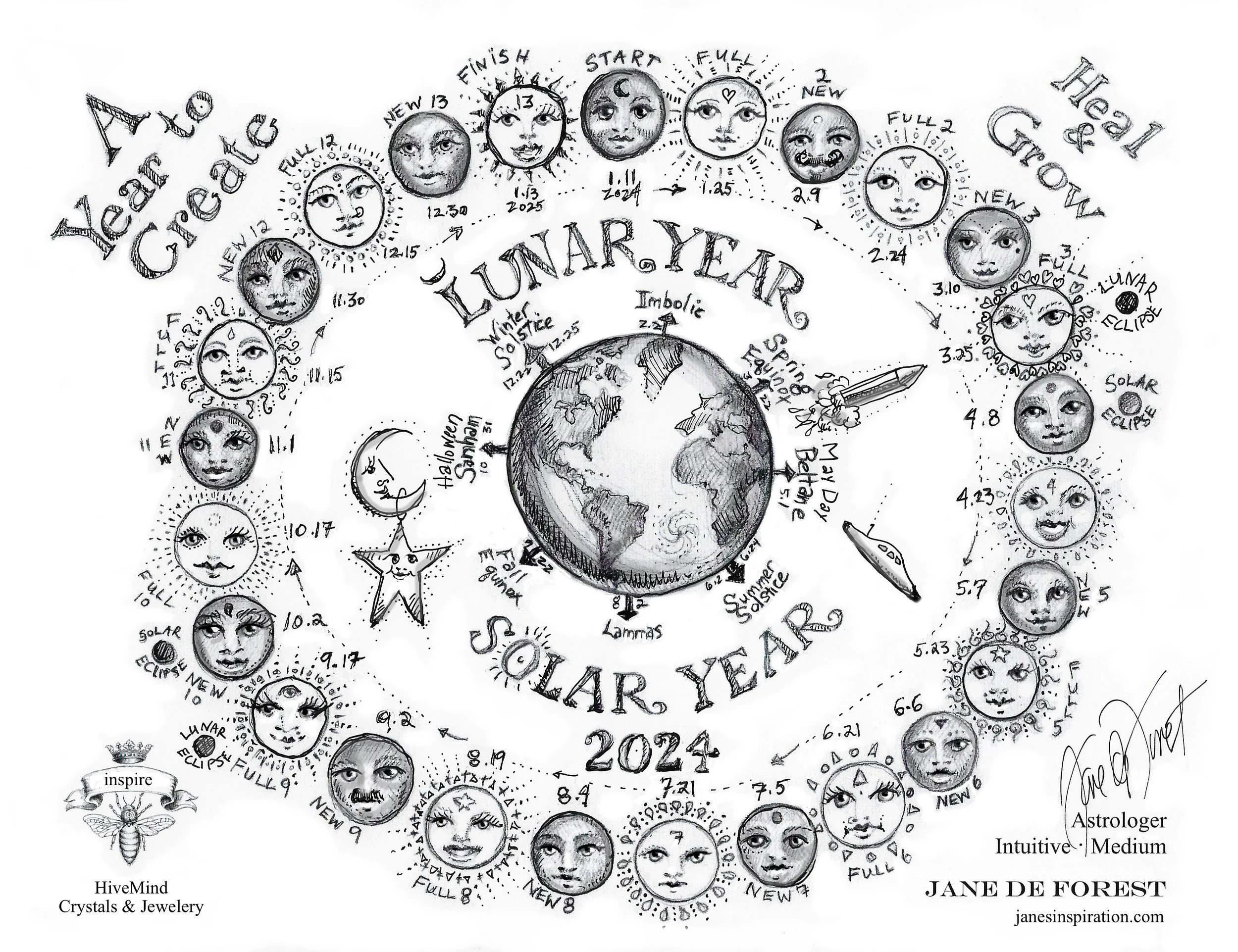Jane’s Blog
Ancient Wisdom: Winter Solstice
Waking Up to a Deeper Truth
The Ancient Source of Modern Holidays
In my work, I see many people who are seekers, hungry for life's meaning, waking up to humanity’s ancient wisdom. I am encouraged and hopeful as more people are awakening to the deeper truth and spiritual meaning that underlie our physical existence.
With knowledge comes power.
Have you ever wondered if there was more to the holidays we celebrate than simply tradition? Did our ancient ancestors preserve a narrative to guide us to live in harmony with spiritual truth and find what empowers us? Could there possibly be power in aligning with celestial forces to manifest and affect matter in this Earthly dimension?
Many of us gather on December 25 to celebrate Christmas, the Christian holiday commemorating the birth of Jesus, “The Light Of The World”, “The Son of God”, “The World's Savior”. It cannot go unnoticed that Jesus’s illustrious birth corresponds to our celestial sun’s illustrious birth on December 25th. On this day in the northern hemisphere, our tilted Earth is furthest from our life-giving Sun, causing the shortest day and the longest night of the year: the Winter Solstice. In the southern hemisphere, it’s the opposite, with the Earth tilting closest to the Sun on December 25th, creating the longest day and shortest night of the year: the Summer Solstice.
(For simplicity’s sake, this article is written from the perspective of the Northern Hemisphere, when the Winter Solstice occurs on December 21. In the Southern Hemisphere, the Winter Solstice occurs 6 months later, on June 21.)
The Sun progresses 1° per day, with Winter and Summer Solstices marking the furthest and closest points to the Earth respectively. The Spring and Fall Equinoxes mark the mid-points of the Solstice cycles.
In the Northern Hemisphere, during the three days between December 21st and December 25, the Sun is at its darkest ebb and appears to stand still on the horizon at sunset. Solstice has Latin roots, meaning "sun stand”. After the three days of “darkness,” the Sun resumes its path, growing larger and larger, up to its apex at the Summer Solstice on June 21.
The Ancient Egyptians perceived the sun as a sentient being and as a resurrecting deity, personified as a hybrid male offspring: half god and half human. Begot by God’s seed or Holy Spirit, and born to a human virgin mother, the Christian son of God was believed to be the savior of humanity who brought with him the good news of eternal life. This story of a resurrecting son of God, born to a virgin mother on Dec 25th, is known by many names. Here are a few:
Christian God-Man Jesus, believed to be born December 25 a little over 2,000 years ago.
Egyptian God-Man Horus, born on the Winter Solstice of The Virgin Mother Isis.
Greco-Roman God-Man Mithras, born Dec 25th of The Virgin Mother Amanita.
Hindu God-Man Krishna, born Dec 25th (and other days) of The Virgin Mother Devaki.
Buddhist God-Man Buddha, born Dec 25th (and other days) of The Virgin Mother Maya.
Babylonian God-Man Tammuz, born Dec 25th (and other days) of The Virgin Mother Ishtar.
Looking from the vantage point of the early 21st-century, it seems our culture is rich in material things, while at the same time bankrupt in great wisdom. But things weren’t always this way. In ancient times, architecture and allegory were teaching tools used to instill guidance and provide solace for this Earthly sojourn. As Descartes ushered in the Age of Enlightenment in the 1600’s, we replaced the mythical and symbolic mind with the logical and scientific mode of thinking. But did we throw out the baby with the bathwater?
This question has haunted me since I was young, and is what provoked me to research indigenous and religious traditions, as well as spiritual philosophies around the globe. My investigations took me from the megalithic structures of ancient Egypt, England and Mexico to the myths of the ancient Romans, Meso-Americans and Chinese. My conclusion? The epic struggle between the darkness and light of earthly existence, as well as the inevitability of physical death and the promise of everlasting life, are ubiquitous as central themes.
This annual celebration of the Sun’s death and rebirth, or resurrection, embodies the theme of our life on Earth. It represents our descent from our “real” home (with “God” in the Spirit World or Afterlife) into 3-D matter and incarnation in the physical world, or Earth, and back again. This important wisdom has been taught through stories and celebrated throughout history during the solstices and equinoxes. But in our current paradigm, these guiding principles have been all but lost. And the cornerstone of wisdom that, we are eternal spiritual beings who are reborn of this world, has been all but eclipsed.
With the generous gift of the return of “The Son/Sun of God”, and his nursing rays, Mother Earth sprouts her seeds, her crops grow, and people and other creatures survive. By understanding the symbols hidden in plain sight, we can access timeless wisdom to help guide our life, plant the seeds of our heart’s desire, and have faith and confidence in our eternal future. It’s reassuring that seasonal feelings of generosity and the “Spirit of Giving” once revered by the ancients is still alive and well today, whatever name you call it by in your own winter holiday traditions.


